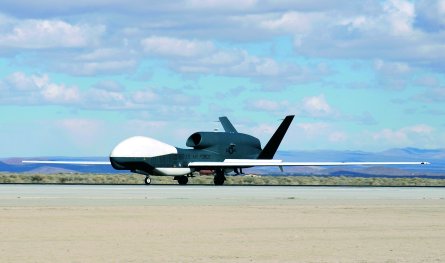By Craig Hoyle in London
Stung by recent criticism from the US Congress and General Accountability Office over the RQ-4 Global Hawk unmanned air vehicle’s reported spiralling programme costs, Northrop Grumman and the US Air Force have released previously classified unit price information on the vehicle’s current and planned variants.
|
The cost of an RQ-4 airframe has increased from $20.3 million for the programme’s original seven Block 10 A-model demonstrators, but to only $27.6 million each for the rest of the 51 aircraft planned through the remainder of the project, says Walby. The prices do not include the cost of ground equipment or mission payloads. Northrop says each air vehicle has a mission endurance of 32h, and a service life of 20 years or 40,000 flight hours.
Walby says the current Block 10 and Block 20 UAV’s electro-optical/infrared and synthetic aperture radar sensors cost a total of $11.3 million per aircraft, while the Block 30 version’s advanced multi-signals intelligence payload will cost $32.5 million, pushing a Global Hawk’s unit price through the $60 million barrier. However, the Block 40 aircraft’s multi-platform radar technology insertion programme payload will cost only $14 million under current projections.
Some calls for the Global Hawk’s termination stem from opposition to the planned retirement of the USAF’s Lockheed U-2 high-altitude reconnaissance aircraft by fiscal year 2011. Published last February, the Department of Defense’s Quadrennial Defense Review pledged to buy six more Global Hawks by the same time.
Speaking at the Royal Aeronautical Society’s inaugural Langley lecture in London on 27 April, Walby said the Global Hawk’s per hour flight costs of $13,000 are almost half that of the U-2’s $23,000, but that the UAV’s true hourly operating cost is around $6,000 once some personnel costs have been removed. Northrop and the USAF are ready to provide Global Hawk pricing information to Congress, and are confident that the new figures will safeguard the project’s continuation. “We are all there with the detail,” says Walby.
Source: Flight International




















